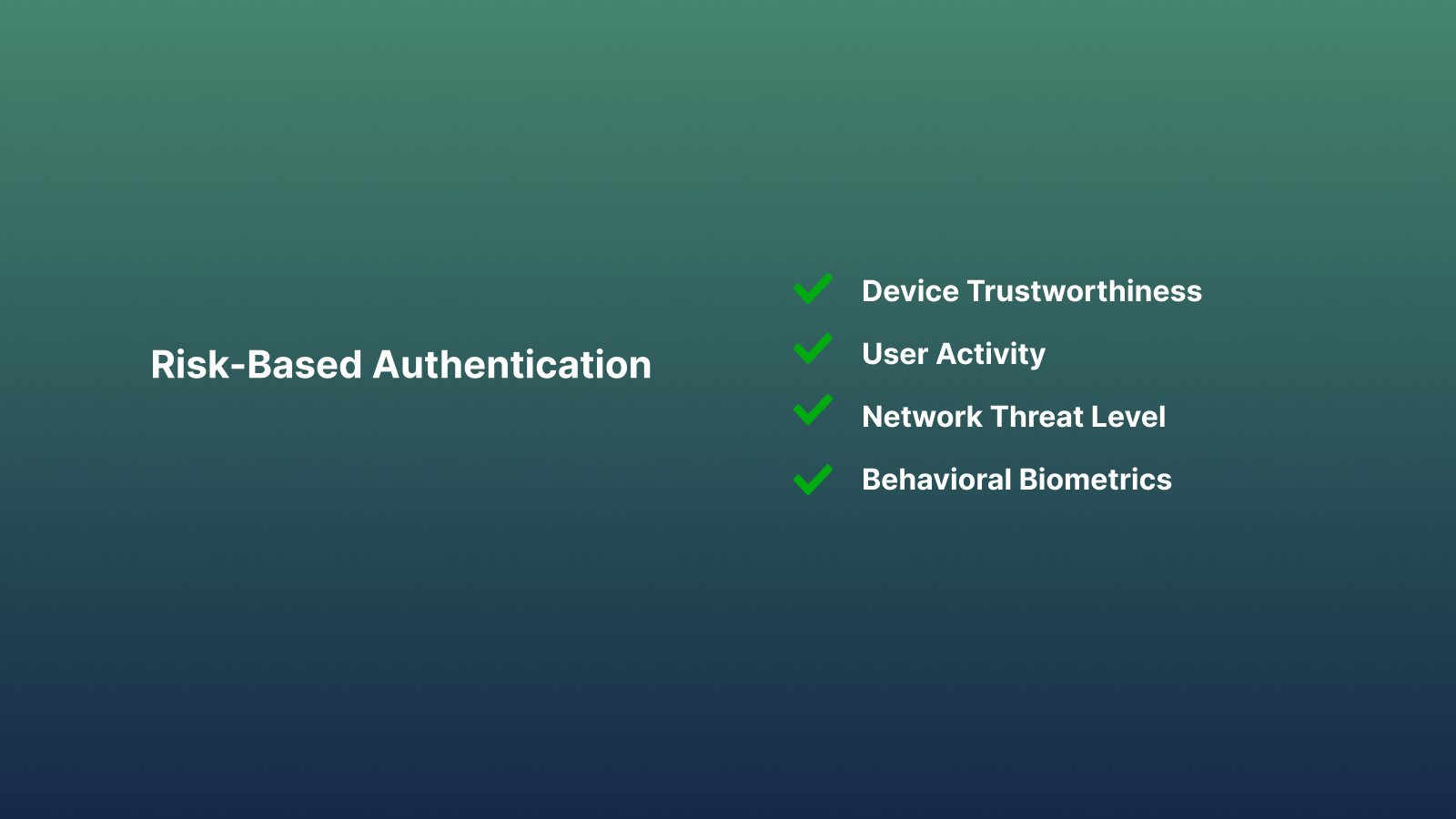Knowledge: Benefits of risk-based authentication
UniSignIn

Introduce to Risk-Based Authentication (RBA)
Risk-based authentication aka adaptive authentication or risk-based Multi-Factor Authentication(MFA), RBA often uses machine learning to assign a risk level to every authentication request. Depending on the perceived risk, it decides whether to prompt for additional authentication factors.
RBA differs from MFA. While MFA is a static authentication method that requires additional layers of validation regardless of the risk level of an authentication request, RBA adapts its measures based on the assessed risk. It assesses the user’s behavior along with several other factors including IP address, geographic location, device, network and login time to determine the risk score in real-time.
Depending on whether the calculated risk score is low or high, the user is either authenticated with only a username and password or is challenged for further authentication. If the additional authentication fails, access is denied.
A higher risk score implies a deviation from usual behavior. This could include requests from dubious IP addresses (such as Tor exit relay) and/or login attempts from new devices, unfamiliar locations or at unusual times.
In conclude, RBA helps businesses prevent the risk of unauthorised access and meet security regulations without inconveniencing authentic users.
Benefits of RBA
Imagine a scenario where a business is at high risk of a data breach or an intruder attack. In such cases, traditional security measures like firewalls and antivirus software are often considered strong but can be limited by budget constraints. Additionally, passwords may not always be reliable. So, how can you address this issue without compromising the user login experience? The answer is risk-based authentication (RBA), which ensures user identity security while maintaining a smooth login process.
For example, a situation where someone tries to access your application with the correct login credentials, but the request appears unusual. This could be a login attempt from a country where your business does not operate or an access request for a sensitive file. Risk-based authentication evaluates the likelihood of an account being compromised with each login attempt. If a request seems suspicious, the user is prompted to complete additional authentication steps to access the system. These extra verification methods, like biometrics, confirm that the request is from a legitimate user.
RBA provides an additional security layer to prevent unauthorised access and suspicious login attempts. It only allows access to authorised users based on risk factors and policies set by the administrator. Risk-based authentication helps assess and manage the inherent risks in login requests. So, how do you decide whether to grant or deny access during a login attempt?
How to implement RBA to protect against threats
When a user tries to log in, an authentication system with RBA will analyse several factors, say, device information (is the user using a registered or familiar device?), location (is the user in the same location as the server?), time zone (is the login attempt from a different time zone?), and network (is the IP address familiar or suspicious?). Based on these factors, the system decides whether the user can log in normally with just a password, needs to provide additional authentication, or is denied access altogether.
How can you ensure the highest level of security? An authentication system with RBA allows your business to perform real-time risk assessments by adding extra authentication factors to protect against potential breaches.
- IP Restriction: Enables or restricts access to your website and web apps based on specific IP addresses or ranges.
- Device Restriction: Limits access to specific known devices approved by the admin.
- Location Restriction: Authorizes access from specific locations only.
- Time Restriction: Controls access based on the time of the login attempt, allowing for more granular access control.
Enhancing Cybersecurity with RBA
Despite many businesses having strong authentication methods, these methods may no longer be sufficient to deal with the increasingly sophisticated threats. Cybercriminals are continually evolving their tactics, and your defences need to adapt to these new forms of attacks just as rapidly.
Traditional methods like password protection or static MFA rules are now inadequate to prevent costly data breaches using advanced cyberattack techniques.
To stay ahead of hackers using advanced RBA strategy. This approach is crucial for a comprehensive security posture, as it analyzes threats in real time and intelligently applies security measures. It enhances your network security with minimal disruption to legitimate users.
Use RBA solutions to proactively implement a risk-based approach and strengthen your digital defences. Don’t wait for a cyberattack to destroy your business.
Everything you need
All-in-one platform
UniSignIn is all-in-one first-party data platform to collect and manage the first-party data of your digital assets.
- Social Login with Google Login
- Social Login with Facebook Login
- Social Login with Twitter Login
- First-party data analysis
- First-party data onboarding and management
- Single Sign-On with Email and password
- User experience orchestration engine
- Personalised Email and communication
- First-party data collector
- First-party tag management

